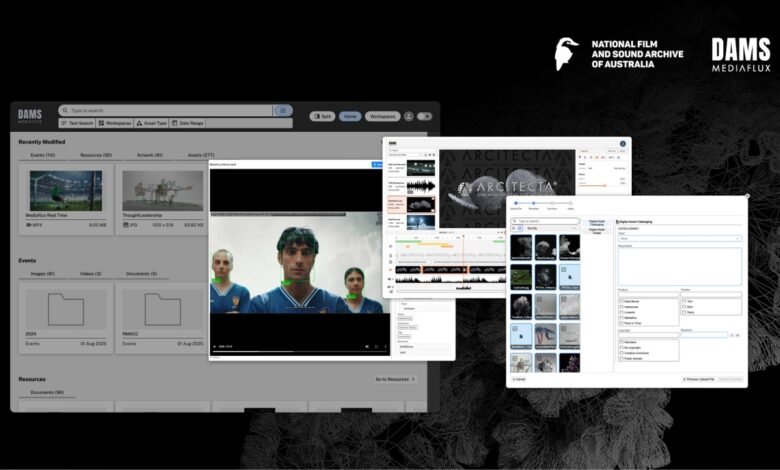Australia’s National Archive Chooses Arcitecta to Preserve Audiovisual Heritage

▼ Summary
– The National Film and Sound Archive of Australia has selected Arcitecta’s Mediaflux platform as its central Digital Asset Management System to enhance preservation and public accessibility of audiovisual heritage.
– NFSA faced challenges managing its growing digital collections and needed to replace legacy systems with a centralized platform that streamlines workflows and integrates with existing tools.
– The implementation will focus on intelligent metadata management, next-generation collections management, and seamless contributor interaction through an intuitive web portal.
– Mediaflux provides petabyte-scale data management with AI integrations, automated metadata enrichment, and support for diverse storage systems including Wasabi cloud and Dell PowerScale solutions.
– This project is part of a broader digital transformation trend in cultural institutions to adopt scalable, metadata-driven platforms for improved asset discoverability and long-term preservation.
Australia’s National Film and Sound Archive has embarked on a major digital transformation by choosing Arcitecta’s Mediaflux platform as its central Digital Asset Management System. This strategic partnership represents a significant advancement in how the institution will protect and share the nation’s audiovisual heritage. The move addresses the growing challenges of managing extensive digital collections while improving public accessibility for future generations.
Faced with outdated legacy systems and increasing demands, the NFSA required a modern solution capable of handling petabyte-scale data across multiple storage environments. The organization needed a platform that could enhance digital discovery, streamline contributor workflows, and support government-funded digitization initiatives for at-risk cultural materials. Mediaflux stood out during the selection process for its unified approach to data management and its ability to integrate seamlessly with existing systems.
Implementation will occur through multiple phases, beginning with three critical operational improvements. Intelligent metadata management will automate data ingestion and enrichment, making archival content more searchable. Next-generation collections management will establish robust digital accessioning workflows for new materials. An intuitive web portal will enable external contributors including broadcasters and production houses to securely deposit and access digital assets.
Supporting this technological upgrade is a sophisticated infrastructure backbone combining cloud and on-premise solutions. Wasabi’s cloud storage integration provides cost-effective scalability without egress fees, while Dell PowerScale solutions deliver high-speed digitization capabilities for instant access to historical content. This hybrid approach ensures both performance and sustainability for long-term preservation needs.
Mediaflux distinguishes itself through its petabyte-scale architecture and advanced metadata automation. The platform consolidates diverse digital assets into a single cohesive system, streamlining complex workflows while offering real-time performance. Its flexible customization options and proven institutional deployment history gave NFSA confidence in its long-term viability and support capabilities.
Jason Lohrey, Arcitecta’s CEO, emphasized that modern cultural institutions require intelligent, scalable platforms to overcome legacy system limitations. He noted that Mediaflux not only addresses current challenges but establishes a new standard for making cultural data dynamic and enduring.
The NFSA’s initiative reflects broader trends across galleries, libraries, archives and museums as these institutions adopt cloud-ready, metadata-driven platforms. According to Dr. Keir Winesmith, NFSA’s Chief Digital Officer, this transformation represents a fundamental rethinking of how Australia’s audiovisual history gets managed and shared. The goal extends beyond preservation to creating meaningful connections between Australians and their cultural heritage, demonstrating how historical content remains relevant to contemporary society.
Through this comprehensive modernization, the NFSA positions itself to better manage growing digital collections while enhancing public engagement. The Mediaflux implementation will ultimately make Australia’s audiovisual heritage more discoverable and accessible, ensuring these cultural treasures remain available for generations to come.
(Source: ITWire Australia)